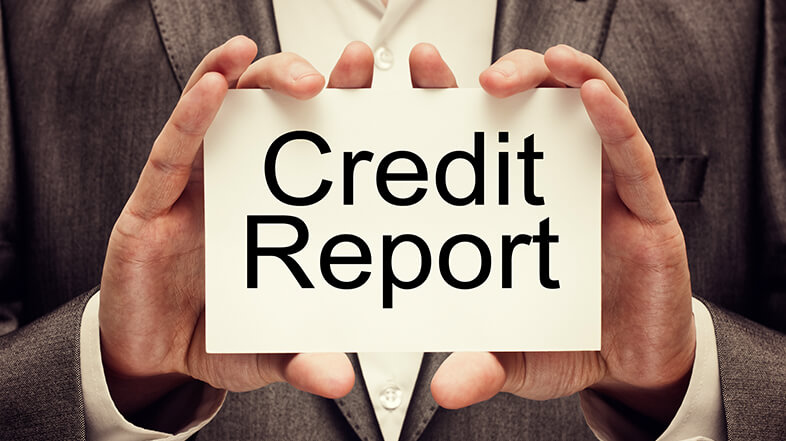June 19, 2023
And just like that, we are halfway through 2023. If only there were a Q3 personal finance to-do list you could consult…
Based on the title of this article, it’s easy to see you’ve come to the right place for Q3 personal finance tips.
Now that we have reached the second half of the year, it’s time to get our t’s crossed and our i’s dotted when it comes to finances.
Statistics suggest many Americans overspent and under-saved during the first and second quarters of the year.
CNN Business reports, “US household debt hit a record $16.9 trillion last quarter, and credit card balances increased nearly 6.6% — the highest quarterly growth since the Federal Reserve Bank of New York started tracking that data in 1999.”¹
A 2023 Bankrate survey found “49% of adults surveyed said they have either a lower amount of emergency savings or none at all, compared to a year ago. Additionally, 36% of respondents said their credit card debt outweighed emergency savings (a record high in 12 years of polling).”²
Most of the blame for the lack of savings is the result of inflation.
If these statistics resonate with you personally, there is still time to make changes or improvements to your personal finances.
Taking time to run through this Q3 personal finance to-do list can point you in the right direction.
#1 Check Your Financial Goals

When the ball dropped January 1, 2023, what were your financial goals for the year?
Did you plan to pay down debt, build up an emergency fund, or save more for retirement?
These are all great goals… but are you achieving them?
Take a good hard look at the financial goals for 2023 and see if you are on track or have fallen behind. Maybe you have a new financial goal.
Be honest with yourself about your financial goals, but don’t give up.
For example, you may not be able to save X amount, but you can and should still save money even if you won’t reach your goal.
If you had a goal of boosting your 401(k), spend time reviewing your 401(k) statement.
[Watch this video on how to read and understand a 401(k) statement]
#2 Reconsider Your Budget

If you are still attempting to live off a budget that doesn’t take into account new food and gas prices, it’s time to make some changes.
When you reviewed your goals for 2023, which goals could be achieved if you made changes to your budget?
For example, given the high price of concert tickets, is it possible to skip the concerts, lower your budget for entertainment, and use the money saved to contribute more to your retirement?
This is also the right time to consider parts of your budget that don’t really work for you in 2023.
Is the gym membership going unused? Are you driving a vehicle that costs too much to drive?
Take time to adjust your budget as needed.
#3 Look for Ways to Contribute More to Your 401(k)

Keeping your budget in mind, look for ways to contribute more to your 401(k).
Have you received a raise?
Have you paid off a medical bill or credit card?
Take the “extra” amount of money each month and increase your 401(k) salary deferral percentage.
Even a salary deferral of 1% will make a big difference come retirement.
Review the contribution limits for 2023 and see what you can do to contribute more (or at least more than you currently are).
Employees with 401(k)s, 403(b)s, most 457 plans, and federal Thrift Savings Plans can contribute up to $22,500 in 2023.
For those ages 50 and older, the 401(k) catch-up contribution is $7,500 in 2023.
#4 Find Opportunities to Save More

The last few years have reminded us of the importance of saving for emergencies.
According to a recent survey, “Most Americans do not have a major savings cushion to fall back on — and that’s consistent. […] 57% had less than $1,000 in their savings in both 2022 and 2023. Further, one-third of Americans had less than $100 in savings in both 2022 and 2023.”³
If you are part of this majority, look for ways to boost your savings.
Put bonuses or tax returns into an emergency savings fund. Find a way to earn extra money, such as selling used items or working a side hustle.
#5 Get Your Finances in Order

During tax season, did you find yourself having to search high and low for different financial paperwork?
Don’t find yourself in the same position next April.
Instead, while you still know where all your financial paperwork is, organize it.
Your future self will thank you.
#6 Check Credit Reports

An important item on your Q3 personal finance to-do list is to check your credit reports.
According to Consumer Affairs, “There were 441,822 cases of credit card fraud reported over the past year, making it the most common type of ID theft in 2022. […] This type of fraud, which accounted for about 40% of more than 1.1 million ID theft reports in 2022, involves thieves using your personal information to either steal from an existing credit card account or to open a new one in your name.”⁴
Given the rate of identity theft happening in the U.S., it is critical to review your credit report and enroll in a service that provides identity theft monitoring.
#7 Rebalance Your 401(k)

As you run through the Q3 personal finance to-do list and review your 401(k) statements, consider rebalancing your 401(k).
Rebalancing your 401(k) simply means allocating assets differently.
For example, your 50/50 stocks and bonds may need to shift to 72% stocks and 28% bonds to decrease your risk and increase your returns.
This to-do list step doesn’t require you to save or spend money, but it can make a big difference for your retirement account.
[Related Read: What Every Investor Needs to Know about Rebalancing a 401(k)]
#8 Plan Now for Q4

Q3 includes summer vacations and travel, and it is immediately followed by the Q4 holiday season.
With this in mind, start planning now for next quarter.
It is smart to start budgeting and saving for Christmas spending now so that you don’t incur debt during the holidays.
#9 Subscribe and Follow Financial Educators

An easy item to check off the Q3 personal finance to-do list is boosting your financial knowledge.
All you need to do is what you are doing now – read more financial literature from financial educators or advisors!
It’s as simple as subscribing to their email lists, following on social media, and listening to podcasts on your drive to work.
The more knowledge you consume, the more knowledgeable you will be.
#10 Get Help from a Financial Advisor

If you have reached Q3 and realize you aren’t reaching your financial goals or are in financial trouble, it’s okay.
There is time for you to do a financial turnaround in 2023.
The best way to get on track is to speak with a financial advisor to see the different options you have.
A financial advisor can help you see your finances through a different lens – one that may help you move toward financial freedom.
Check out our no-cost guide on how to understand The Different Types of Licenses Financial Advisors Have and What They Mean to You.
Sources:
- https://www.cnn.com/2023/03/06/economy/consumers-keep-spending/index.html
- https://www.cnn.com/2023/03/06/economy/consumers-keep-spending/index.html
- https://www.yahoo.com/lifestyle/americans-savings-stack-2023-vs-140023973.html
- https://www.consumeraffairs.com/finance/identity-theft-statistics.html















